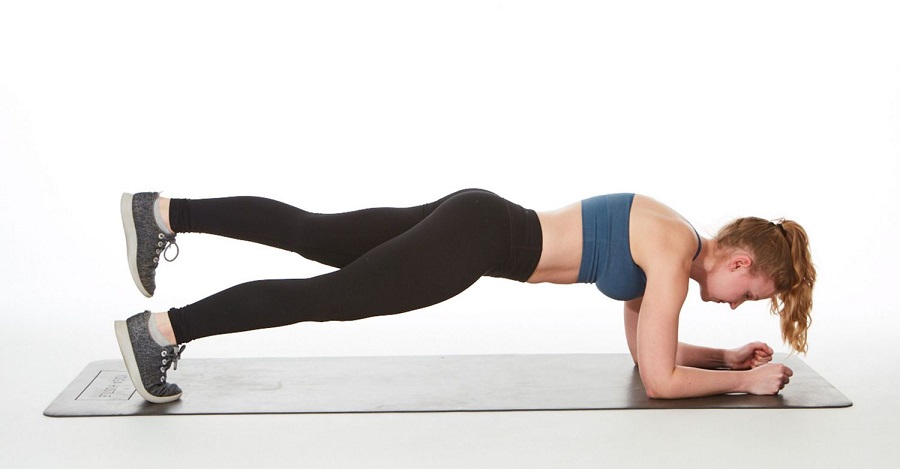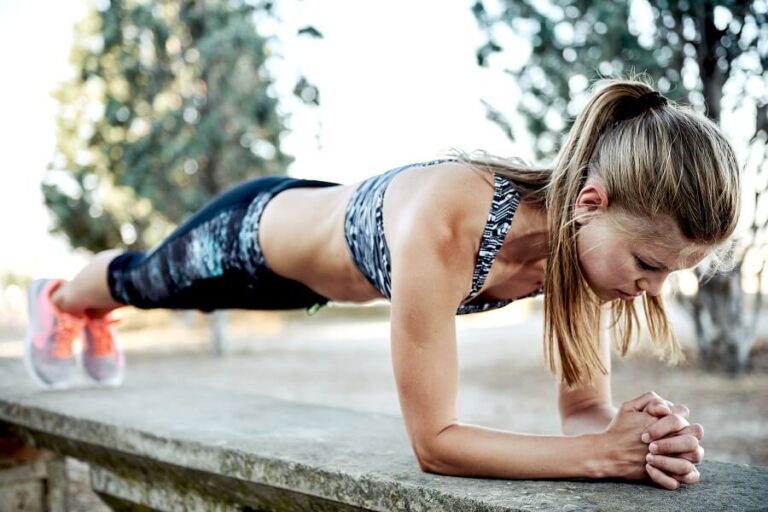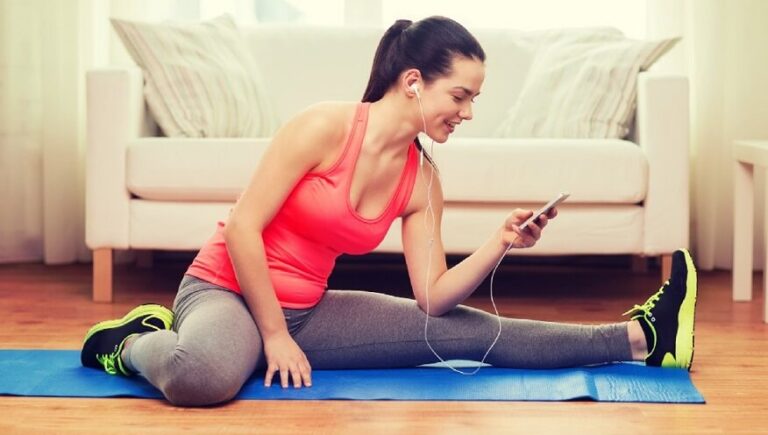Planks are one of the best static-type abdominal exercises. The main advantage of the plates is that they can be executed at any time and do not require special equipment to be done from home.
An abdominal plank routine is a great way to build strength and tone your midsection. However, errors in technique can cause shoulder injuries and lower back pain.
This article describes the correct technique of classic exercise and a routine of abdominal planks at home with examples of the different types.
How to make plates? – Correct technique for beginners
When doing abdominal planks, you must support your body weight with your abdomen. The forearms-elbows and the balls of the feet should be used for support. The glutes and spine should be kept tight and slightly inward.
To do abdominal planks correctly, you must follow these steps:
- Lie face down on a mat
- Support the body on the elbows aligned at the height of the shoulders
- Using your toes, raise your abdomen.
- Tighten your glutes and abs.
- Keep your neck and spine neutral in a straight line from head to toe. You can use a table to check the balance.
- Don’t let your hips drop to the ground. Sagging hips make the exercise easier at first but negates the work of your abs.
- Look down at the bottom. This is an excellent method for maintaining a neutral neck position.
// Recommended: How to tone the body? – Nutrition and exercises
Example of a routine of abdominal planks to do at home
At Nutrition 360, we propose adapting the plank routine at home based on your progress. The idea is to be able to finish the way with total emphasis on technique.
If your muscles can’t reach the standard set, it is better to reduce the number of exercises and times (or repeat more specific types of push-ups) than to sacrifice the technique. To simplify, we sort the types of plates in the routine by difficulty.
Below you can see an example of a routine of abdominal planks to do at home:
- Front plates
1 minute – 3 sets
- Planks on elbows
1 minute – 3 sets
- Planks on one foot
30 seconds – 3 sets
- Plates in motion
Ten reps from the home side
- Lateral twists on a support
Eight reps on each side
- Side static plates
1 minute – 2 sets on each side
- Lateral dynamic plates
10 reps on each side – 2 sets
- Bonus mountain climb
1 minute – 2 sets
How many times to do a plank routine at home per week?
The number of times you will do an ironing routine at home per week depends on the goals you set for yourself.
For the abdominal muscles to increase their volume, it is recommended that they rest for at least two days. Between sets, the rest should be 1 minute. If the difficulty is low, you can do the most difficult types of plates, for example, support.
On the other hand, if during the week the abdomen has already been worked with exercises such as bicycle crunches or wheel crunches, Doing a plank routine can backfire.
As a general rule of thumb, you can do an ironing routine at home up to 3 times a week.
Benefits of an abdominal plank routine
One of the benefits of abdominal planks is that this exercise does not require any equipment. If you know how to iron correctly, you can do a routine at home or on vacation.
The abdomen is entirely worked in this exercise and the upper body secondarily. So if your goal is to tone and strengthen those abdominal groups, a plank routine is ideal.
Another benefit of planks, like other functional exercises, is to work for several muscle groups simultaneously. This allows spending large amounts of energy and warming up the body for different activities.
The benefits of an abdominal plank routine at home are:
- Strengthen the abs – core
- Improve the cardiovascular system
- Tone the shoulder muscles
- Improves the irrigation of nutritive fluids to the muscles
What muscles work when doing planks?
The work of the muscles depends on the type of planks that are executed. For example, classic planks primarily exercise the abdominal muscles; to a lesser degree, the powers of the shoulders and legs are worked.
Twists are one of the few exercises that work the transverse abdominal muscles.
Different load distribution is achieved when making other types of plates, such as changing inclination. By resting the feet on a platform, a beginner can work the muscles in the upper abdomen more. Supporting the arms, it is possible to perform the lower area more.
In any case, we emphasize that a plank routine for beginners at home should not focus on doing all the more complex types and variants but on achieving the perfect technique of the exercise. On the other hand, if you are an advanced athlete, you can develop a plank routine with more complex activities.
ABSTRACT
An abdominal plank routine is an excellent way to tone your midsection. The first rule of thumb to plank correctly is to keep your back straight, respect shoulder-arm angles, and look slightly forward.
A home ironing routine should emphasize technique. A beginner is recommended to divide the pattern into about 12 sets with no more and no less than 1-minute rest.
The main benefits of planks are that they do not require equipment, as well as allow several muscle groups to be worked simultaneously.
Including planks in a routine stimulates blood circulation and improves the shape of the abdomen.







